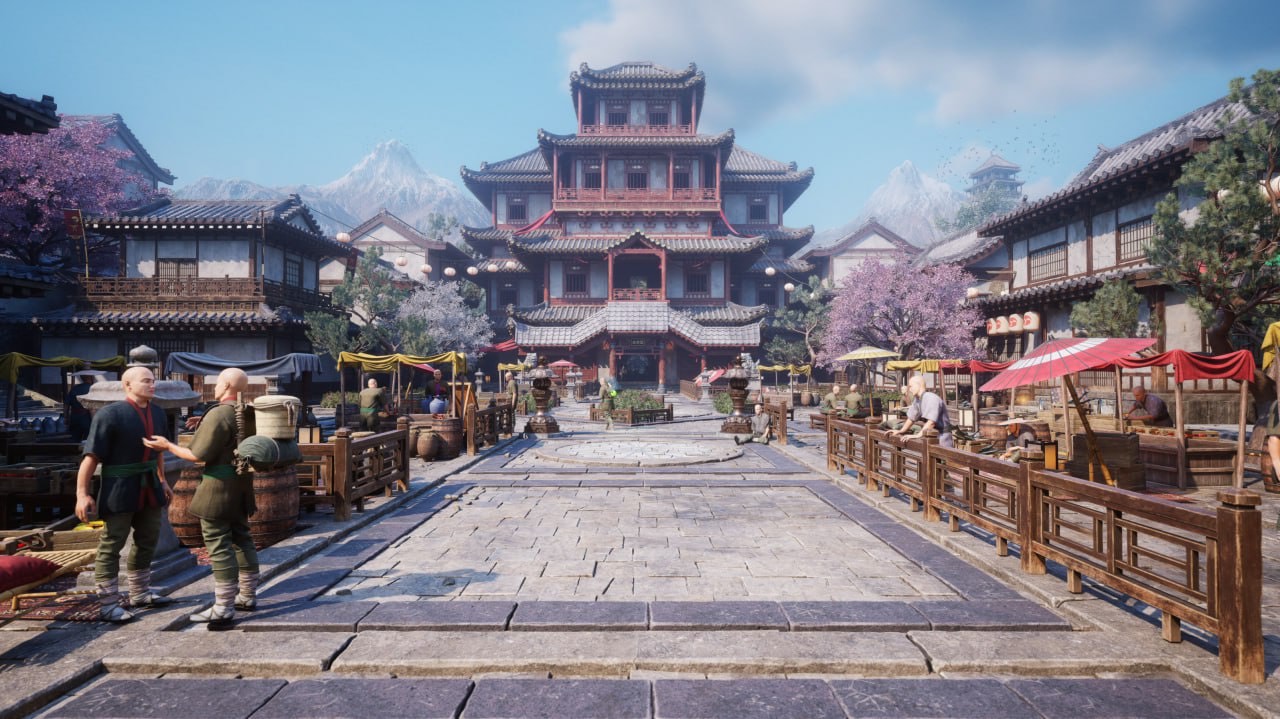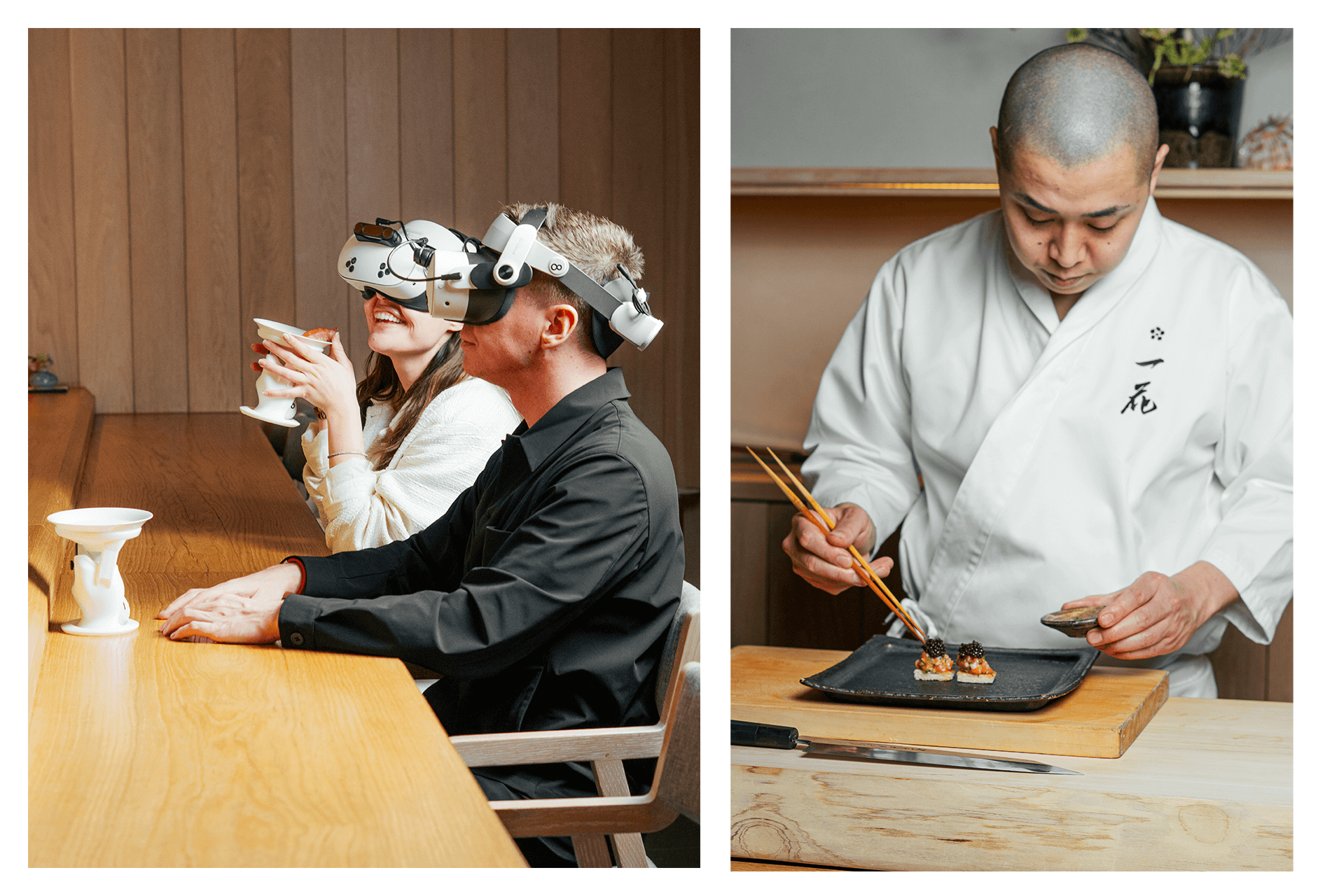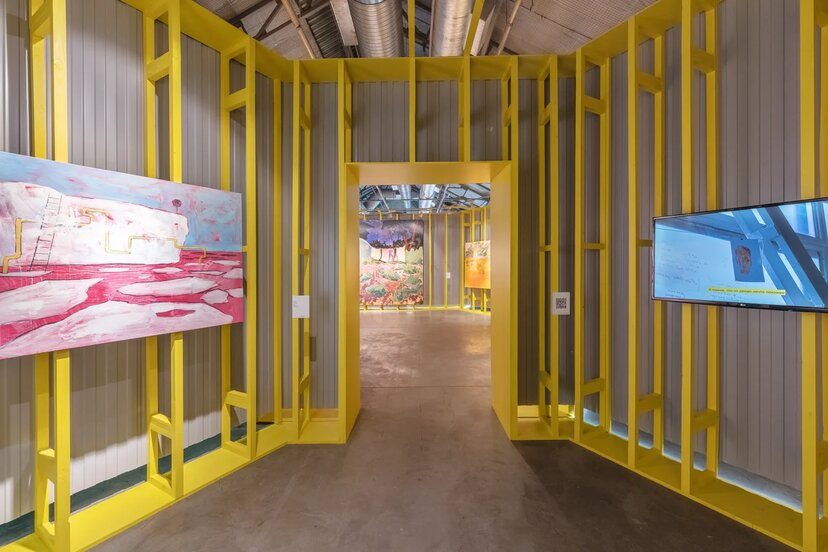You never forget your first exhibition.
There’s the thrill of possibility, the terror of oversight, and the electricity of having something to say — even if you’re not quite sure how to say it yet. For me, it was Consciousness Doesn’t Have Borders — a title that, at the time, felt like pure bravado but, in hindsight, captured everything I would go on to explore. I was invited to join the project as assistant curator and coordinator, working alongside curator Kristina Romanova and producer Natalia Grabar, whose leadership shaped the exhibition. It was my first real exposure to the emotional and logistical layers of mounting a show — and the first time I began to understand how curation could become immersive.
The artist, Yulia Virko, was equally hungry. Her works were massive, dreamlike portals that dripped onto the studio floor — and into your subconscious. You could smell the paint. We carried the 320×340 cm canvases ourselves. It felt like we were carrying a vision.
Virko’s process was intense, layered, and unapologetically vulnerable. She would apply paint, then peel it off — a removal of surface, sometimes violent, sometimes delicate, to expose what was hidden beneath. Her visual language felt subconscious, even surreal: a flamingo under police surveillance, an iceberg floating in raspberry water. Each image felt as though it had been pulled from a dream and hung on a wall before it could vanish.
At the time, she was inspired by Gerhard Richter’s physicality and Antony Gormley’s ideology — particularly Gormley’s resistance to the "mirror stage" and the idea that we are defined by appearances. Gormley asked viewers to consider what lies beneath the surface. Virko pursued that question by peeling away the surface, layer by layer.
The exhibition was staged in a raw, industrial space, the White Hall, which we transformed with bright yellow labyrinthine walls designed by architect Ksenia Lukyanova, now a dear friend. These metal modules offered multiple pathways through the show. It was curated not to be viewed from a distance, but to be moved through. Guests didn’t just see the art — they entered it. The disorientation was intentional.

At the time, I didn’t have the vocabulary for what we were doing. But looking back, it was my first experience curating beyond the visual — working with space, texture, movement, and emotion. The show didn’t smell neutral. It smelled like oil paint and raw metal. It echoed differently in each corner. It was physical, immersive, and atmospheric. That instinct — that curation could be multisensory — stayed with me.
Years later, I found myself in Austin, Texas, at The Floating World: Masterpieces of Edo Japan at the Blanton Museum. The exhibition was poetic — full of lightness and impermanence, chronicling the sensory pleasures of Edo-era life. But I left with a question: what would it feel like to be there? To hear the shakuhachi flute in the background? To smell incense drifting from a street stall? To walk through a floating world?
That question reawakened something. Undertaking the Art and Business course at Sotheby’s Institute taught me how to think without borders. For the first time in an academic setting, I felt encouraged to question, to imagine, to create beyond the conventional. The entrepreneurial mindset at Sotheby’s Institute — coupled with the exposure to global perspectives — shaped my approach to storytelling and curation. Even now, whether I’m working in hospitality or tech, that foundation as a curator informs everything I build.

Today, as the founder and creative director of EPIC.NOW, I work at the intersection of curation, technology, and hospitality — building immersive, multisensory experiences that incorporate sound, scent, taste, and touch into their storytelling. Our collaboration with Michelin-starred omakase Icca in New York invites guests into virtual environments inspired by Japanese cultural motifs — cherry blossoms in bloom, silk dancers in motion, Edo-period marketplaces. We compose these experiences like one would curate an exhibition: with mood, memory, and emotion in mind.
But it’s not just about spectacle. It’s about intimacy. Two guests might witness the same scene, but one is drawn to the scent of the blossom while the other follows the rustle of fabric. The most powerful exhibitions aren’t simply remembered — they’re absorbed. Through the skin, through scent, through sound. If done right, they don’t end when you leave the room. They follow you — clinging like the smell of turpentine in your coat, echoing like a half-forgotten melody, unsettling something just below the surface.
And then, one day, without warning, they reappear. A color. A feeling. A flicker of déjà vu. Like Virko peeling back layers of paint, they reveal something you didn’t know was there — or maybe had always been. That’s the power of curating with all the senses. It doesn’t just show you the world. It quietly rewrites how you move through it.
Words by Elizaveta Petrova
Images courtesy of EPIC.NOW and Elizaveta Petrova.
